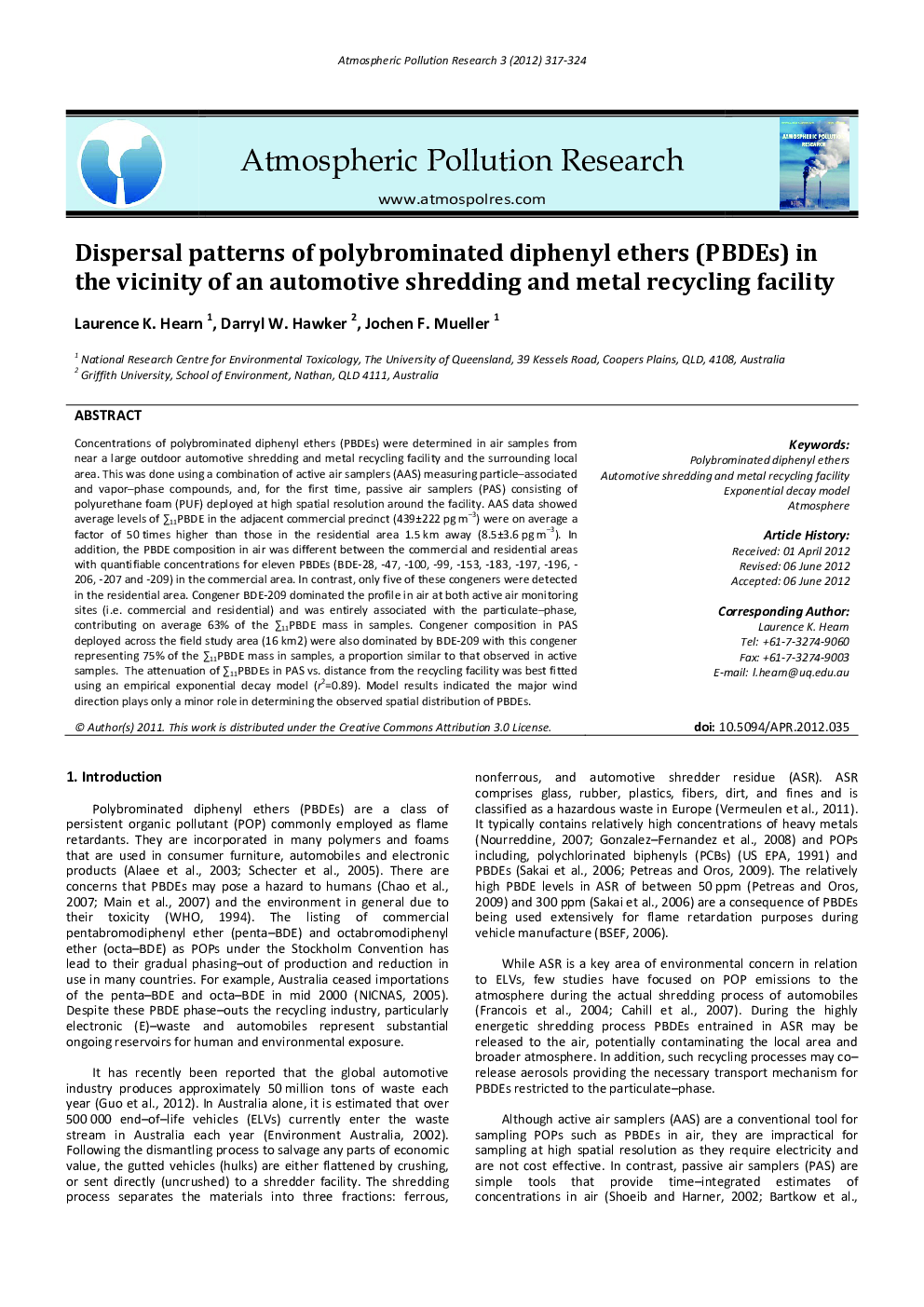| Article ID | Journal | Published Year | Pages | File Type |
|---|---|---|---|---|
| 4435052 | Atmospheric Pollution Research | 2012 | 8 Pages |
Concentrations of polybrominated diphenyl ethers (PBDEs) were determined in air samples from near a large outdoor automotive shredding and metal recycling facility and the surrounding local area. This was done using a combination of active air samplers (AAS) measuring particle–associated and vapor–phase compounds, and, for the first time, passive air samplers (PAS) consisting of polyurethane foam (PUF) deployed at high spatial resolution around the facility. AAS data showed average levels of Σ11PBDE in the adjacent commercial precinct (439 ± 222 pg m−3) were on average a factor of 50 times higher than those in the residential area 1.5 km away (8.5 ± 3.6 pg m−3). In addition, the PBDE composition in air was different between the commercial and residential areas with quantifiable concentrations for eleven PBDEs (BDE-28, -47, -100, -99, -153, -183, -197, -196, - 206, -207 and -209) in the commercial area. In contrast, only five of these congeners were detected in the residential area. Congener BDE-209 dominated the profile in air at both active air monitoring sites (i.e. commercial and residential) and was entirely associated with the particulate–phase, contributing on average 63% of the Σ11PBDE mass in samples. Congener composition in PAS deployed across the field study area (16 km2) were also dominated by BDE-209 with this congener representing 75% of the Σ11PBDE mass in samples, a proportion similar to that observed in active samples. The attenuation of Σ11PBDEs in PAS vs. distance from the recycling facility was best fitted using an empirical exponential decay model (r2=0.89). Model results indicated the major wind direction plays only a minor role in determining the observed spatial distribution of PBDEs.
